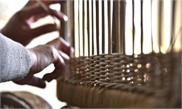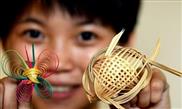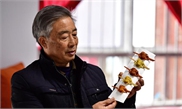ARTS / CULTURE & LEISURE
Young inheritor connects high-end products with dynamic bamboo weaving
Journey to modernity
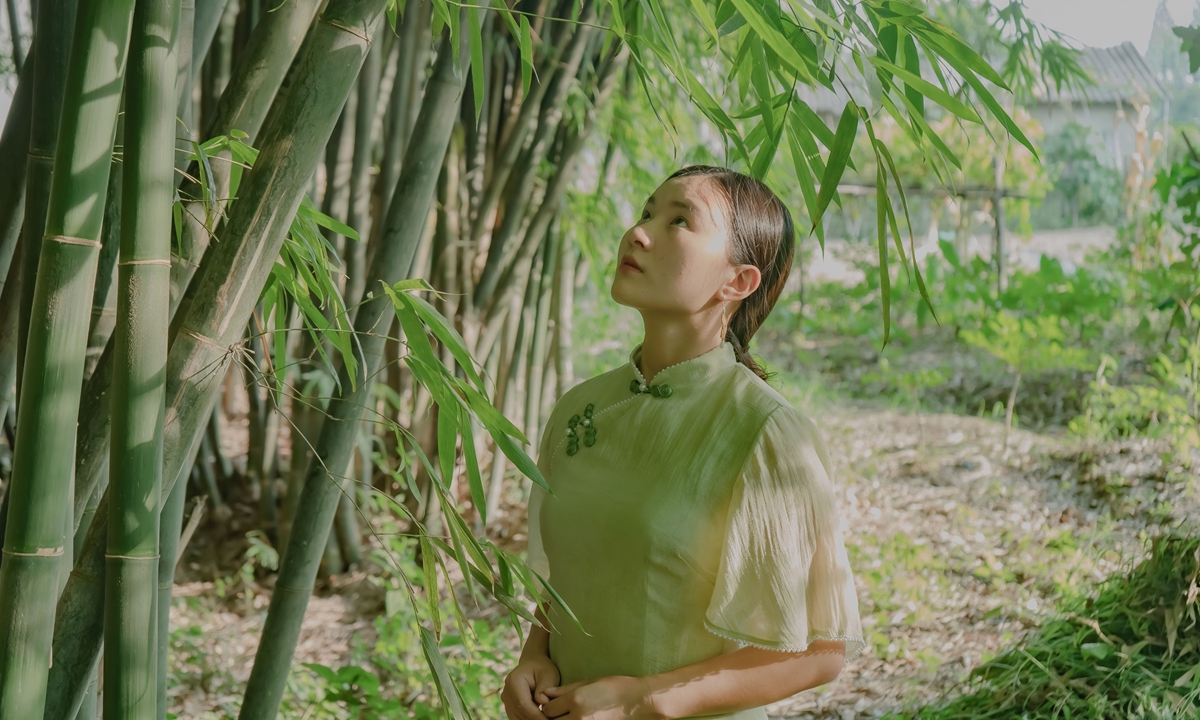
Bamboo weaving artist Zhang Dingjuan Photo: Courtesy of Zhang Dingjuan
When Ang Lee's Crouching Tiger, Hidden Dragon showcased a stunning bamboo forest fight scene in 2000, the world was dazzled by the mastery of Chinese bamboo culture. But this plant, which embodies the life, art, morality and spirit of the Chinese people, is being rediscovered and repurposed by young innovators into products that hold new practical value and cultural significance.Zhang Dingjuan's creations are tapestries of vivid dreams and imaginative concepts. The blue sky, the crimson Danxia (a landscape characterized by reddish sandstone features) and the golden wheat dominate the Gen Zer's woven canvases. Zhang, born in 1996, demonstrated the diversity and beauty of Chinese intangible cultural heritage with her bamboo creations to the Global Times in a recent interview, while on social media she writes, "Bamboo weaving has more than one outcome, and beauty is in its diversity."
Drawn from nature
As an inheritor of Daoming bamboo weaving, a traditional craft from Chongzhou, Chengdu, in Southwest China's Sichuan Province, the young female bamboo artisan, as if by magic, transforms strips of bamboo into earrings, bracelets, phone cases, and even high-end backpacks.
In 2019, Zhang graduated from Chengdu University after majoring in product design. Of all the companies that extended job offers to her, only one specialized in products made from bamboo weaving.
"My grandfather and maternal grandfather were both bamboo weavers. They would make baskets and other things for sale at the market," Zhang said, adding that bamboo weaving has always been close to her life, prompting her to choose this path after graduation.
Zhang's first company mainly specialized in bamboo-covered porcelain, using extremely thin bamboo threads to wrap porcelain pieces for decoration.
The bamboo threads were usually of uniform size and thickness. But for Zhang, such a material held greater possibility.
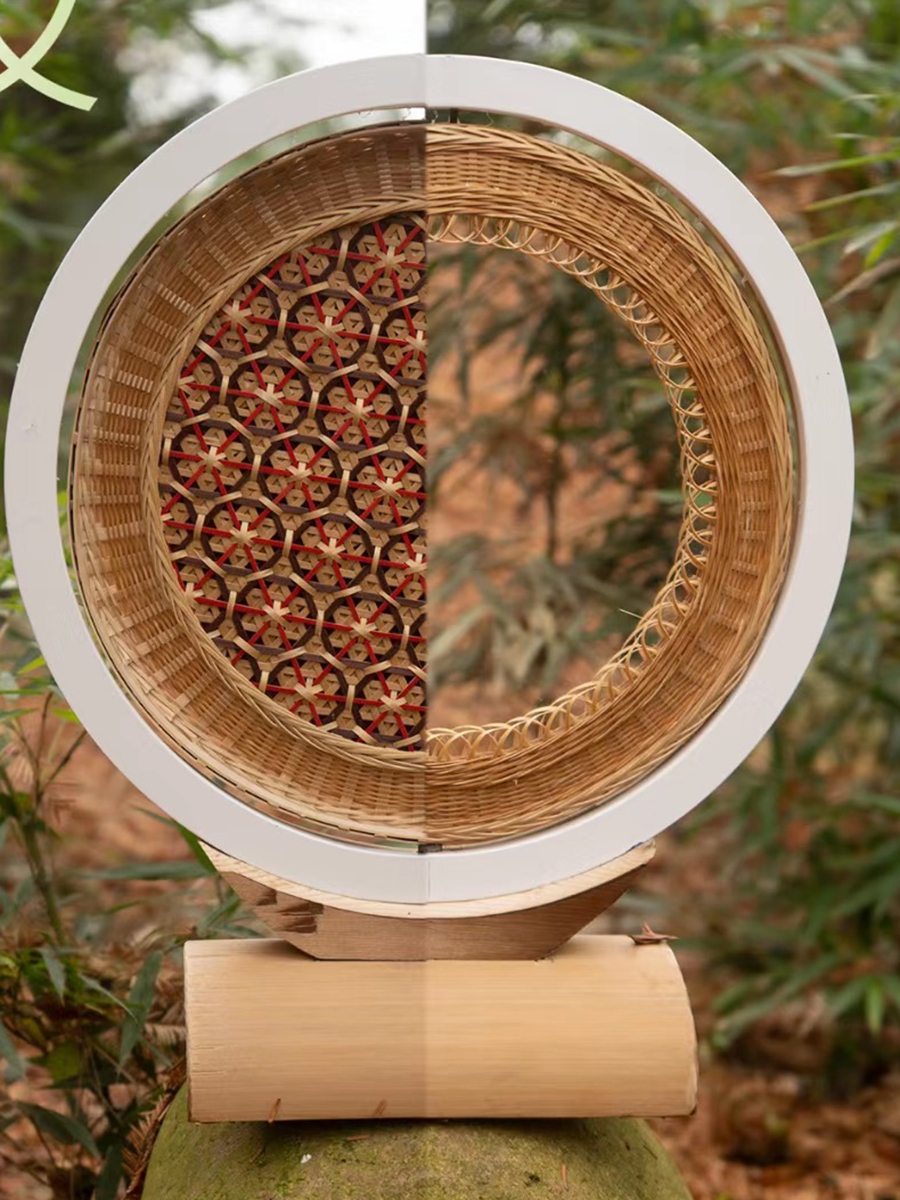
A mirror with plum blossom patterns made with bamboo weaving by Zhang Dingjuan Photo: Courtesy of Zhang Dingjuan
She later learned about another kind of local bamboo weaving from Daoming town, in Chongzhou, where she was fortunately able to learn from Zhao Sijin, a national representative of inheritors of the intangible cultural heritage of Daoming bamboo weaving.As Zhang explained, the bamboo intended for use has to go through a series of "rather tedious processes." From scraping off the green skin and splitting the bamboo, to making the strips, splitting, and pulling the threads, the process is long and involved.
Depending on the different weaving needs, the thickness and width of the threads varied. The finest bamboo thread is less than a millimeter thick.
"There is a kind of bamboo weaving calligraphy [bamboo thread], which can be so thin that it is almost transparent, thin, and soft like silk."
Zhang always has a clear goal in inheriting Daoming bamboo weaving.
"My advantage is that I have learned some painting. As traditional Daoming bamboo weaving basically utilizes natural color, then why not add some color to it to create a different visual effect."
"The wave pattern of bamboo weaving is very dynamic. Adding more color definitely makes it look better," said Zhang, explaining her initial motivation behind learning her intended switch. The natural color of bamboo complimented by additional colors perfectly captures inspirations from her life.
"The first gradient work piece I created was inspired by a view of the evening skyline as seen from my house. I wanted to capture such exquisite beauty using bamboo weaving."
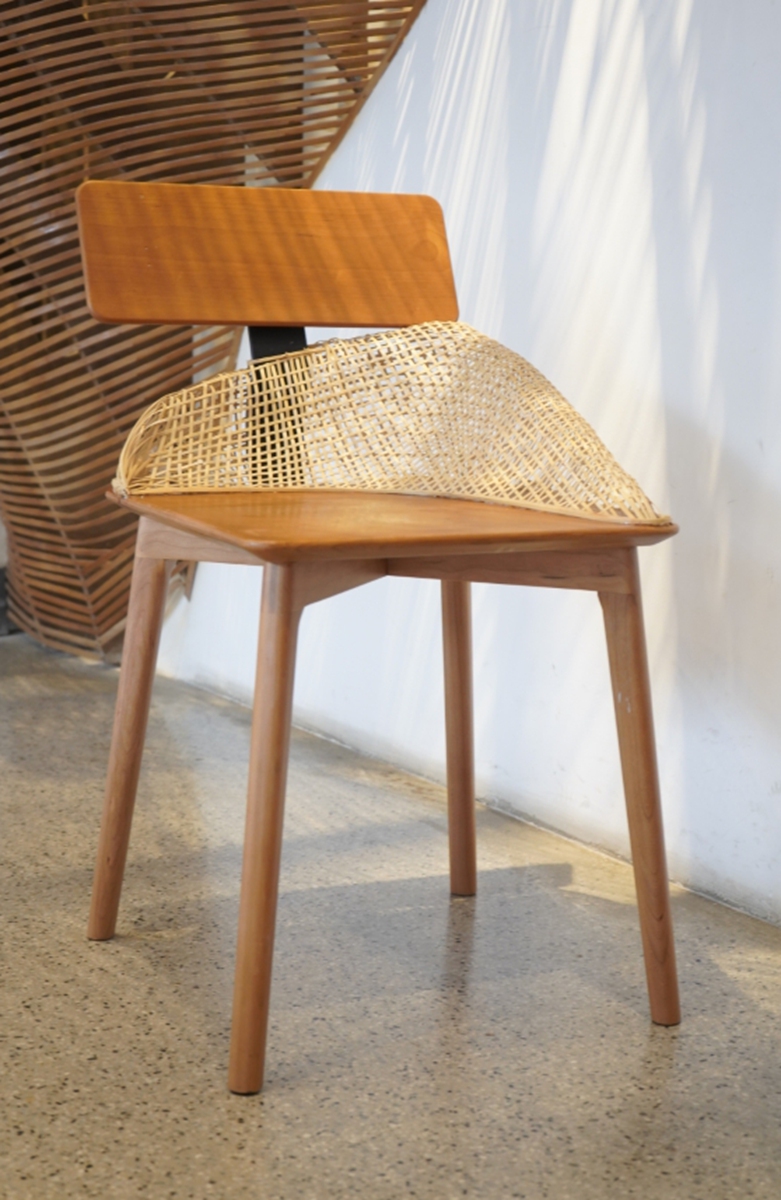
A wooden chair with bamboo weaving design by Zhang Dingjuan Photo: Courtesy of Zhang Dingjuan
Innovating in practicalityZhang had previously collaborated with a brand to make 200 traditional Chinese round fans, or tuan shan, with unique Yi ethnic costume patterns adorning the fan surface.
"It looks like a simple weaving method, with just flower patterns," Zhang said.
But to restore the color and texture of the ethnic patterns, the inheritor had to use bamboo strips of different shades, widths, and thicknesses to create a rich and three-dimensional visual effect.
The unique products created through cooperation with well-known brands have been challenging and rewarding to the young designer.
In a recent collaboration with a famous car brand, Zhang was asked to add metal wires to the soft bamboo material to create a fish tail-like pattern for their seat backs.
This required using very fine metal materials to thread the bases of bamboo flowers.
Though challenging, Zhang still found it very interesting.
Like her teacher Zhao, Zhang also emphasizes the importance of innovation in her creation. In her opinion, innovation must be based on a solid mastery of traditional weaving skills, so as not to lose the essence of bamboo weaving.
When talking about how to balance innovation and tradition, Zhang noted that traditional weaving methods are already rooted in her brain. "I don't need to think about it all the time during the weaving process so it helps me to naturally blend the ideas into the works I want to express."
The work that best reflects this idea is her plum blossom mirror made early on in her bamboo weaving days.
The plum blossom mirror was a work that Zhang actively proposed to her teacher as something she wanted to try.
"I needed a mirror which could have some decorative elements, so I wanted to try it with bamboo weaving."
With the help of master Zhao, Zhang used more than a dozen weaving methods to create her favorite plum blossom pattern.
"This was also the first time I integrated bamboo weaving into my life." It was this experience that made Zhang realize that if she wanted to connect to younger clientele, bamboo weaving had to balance practicality and design.
"With the support of my teacher, I could try it with a determined mind, and I think this determination has been very important for me. The craft is very traditional, but breaking tradition requires courage. If there was no one there to guide me, it would be a very painful process."
Wang Xiaochun contributed to this story
